Photos: The kimono gets modern at LACMA
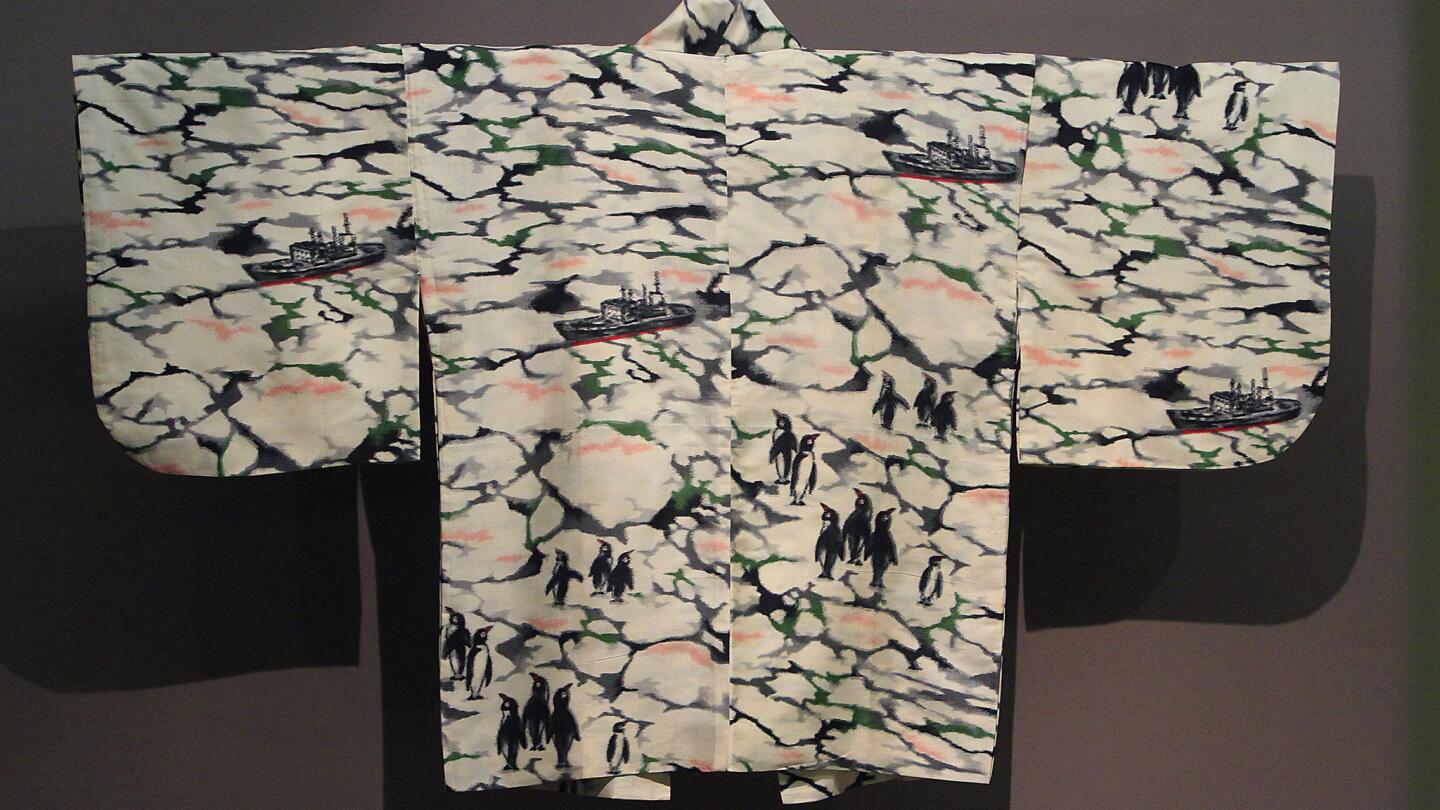
This piece, showing penguins and ice-breaking ships, offers a similar example of a kimono referencing important events. Produced in the late 1950s, it commemorates Antarctic exploration. (Kirk McKoy / Los Angeles Times)
An exhibition at the L.A. County Museum of Art gathers an array of early 20th century kimono, a period when Western influences (from graphics to production techniques) would affect the look of this traditional Japanese garment
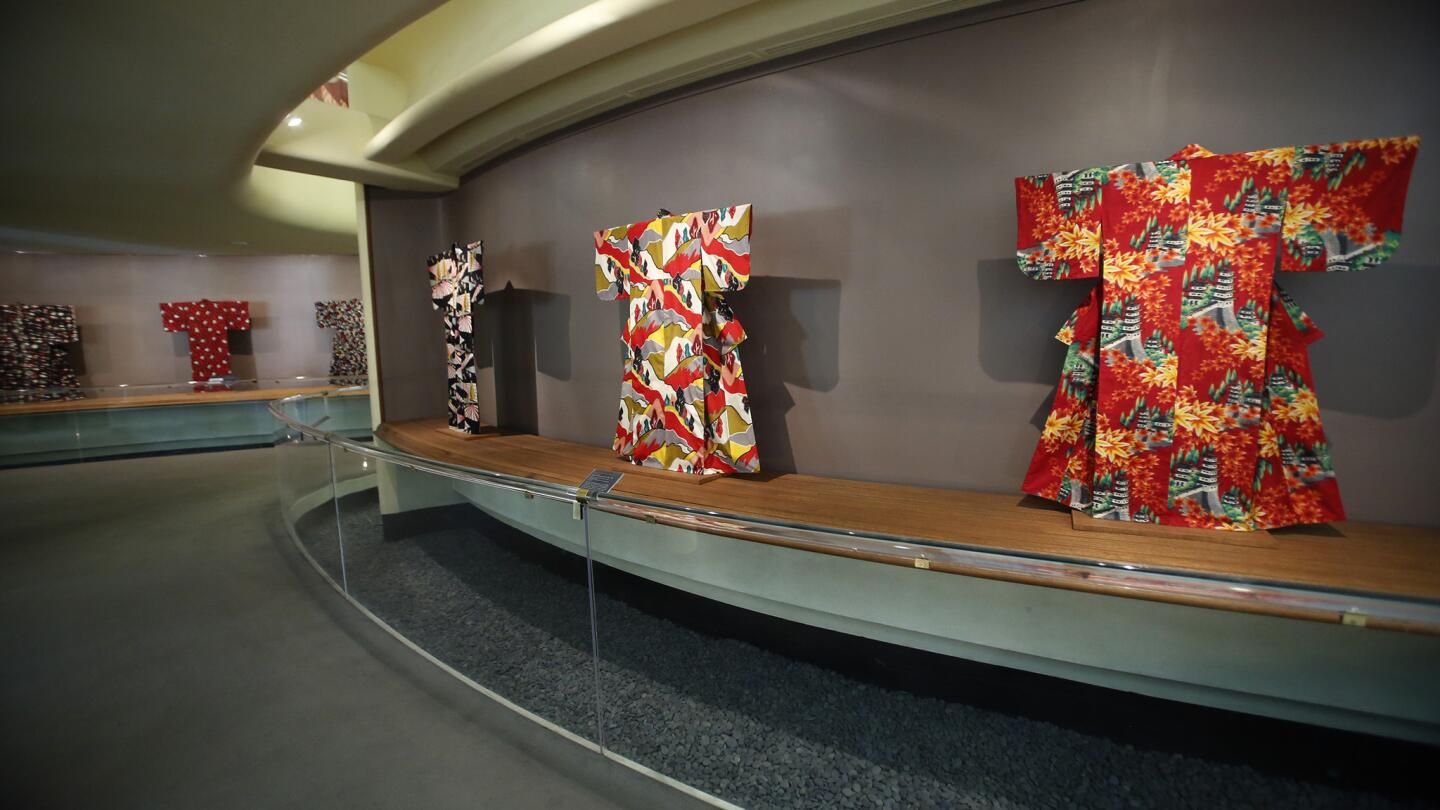
The show currently occupies LACMA’s Japanese pavilion, which is celebrating its 25th anniversary. The exhibition breathes new life into architect Bruce Goff’s unusual building design. (Kirk McKoy / Los Angeles Times)
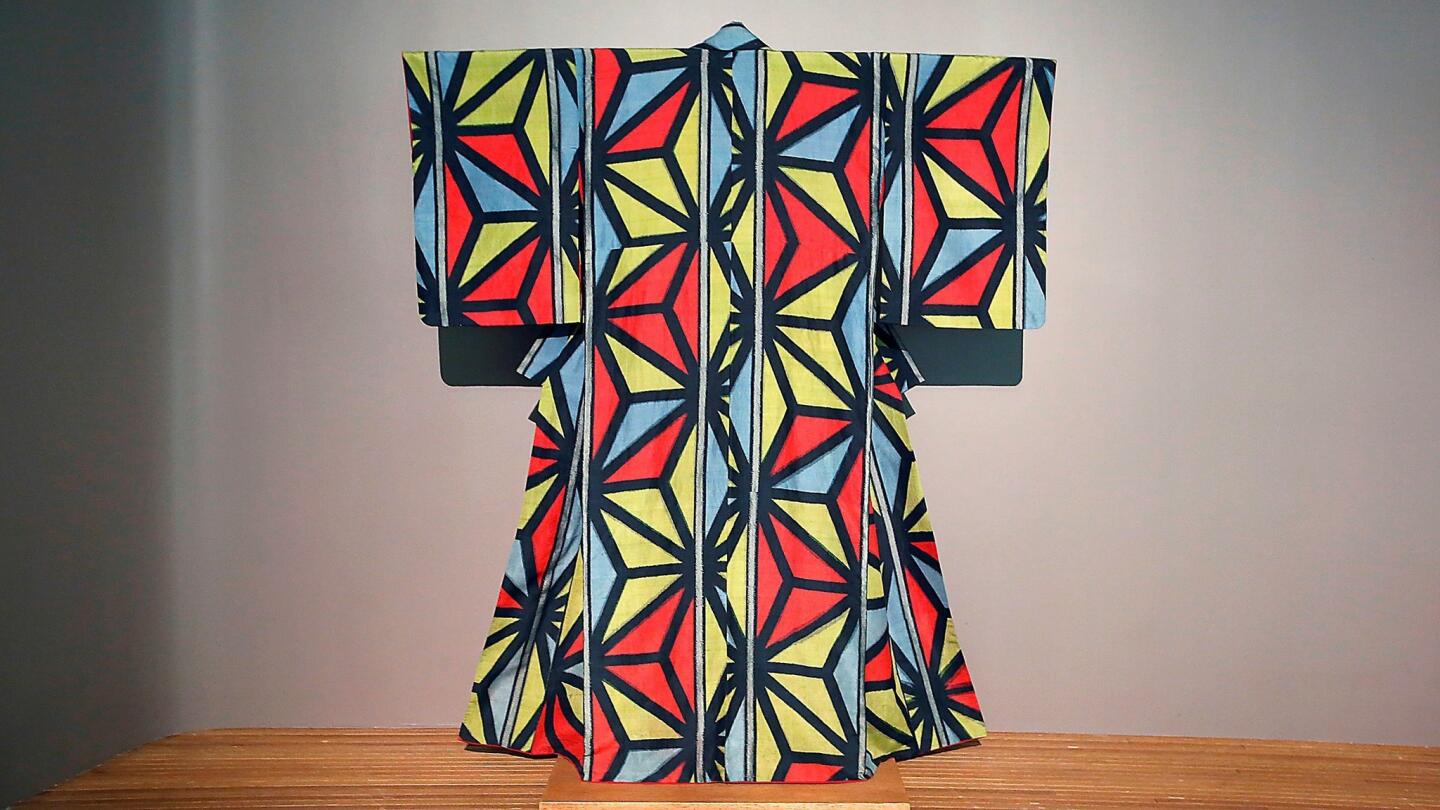
The kimono on view at LACMA, dating from the 1920s to the ‘50s grab the eye and hold it with their strong graphic elements. This one, from circa 1935, marries a traditional hemp-leaf pattern with a modern composition, for a garment that feels totally 3-D. (Kirk McKoy / Los Angeles Times)
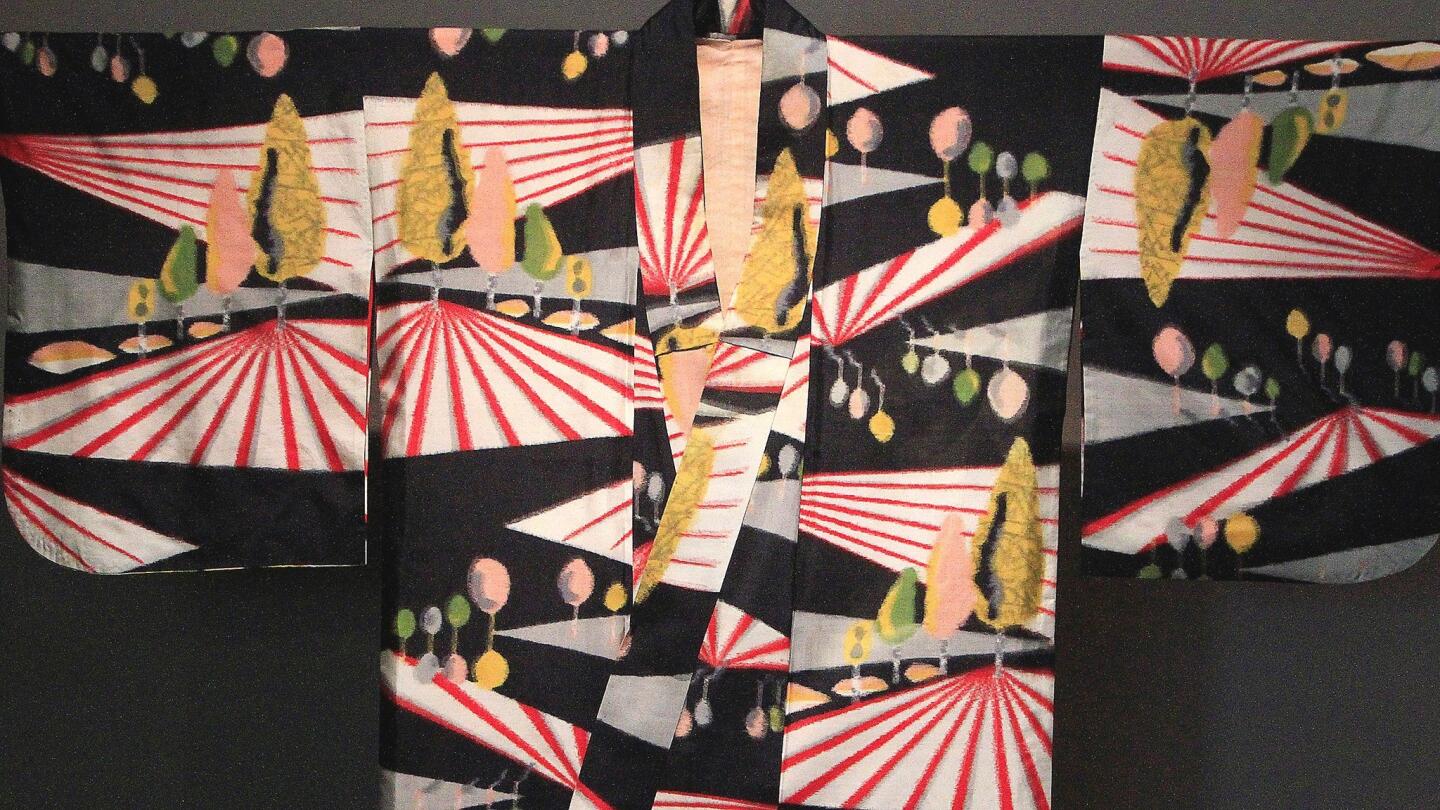
Modern kimono did not do away with images of landscape. Here, a bucolic country setting bears traces of modern abstraction, with pink trees and bright red lines employed to create a sense of depth -- the sort of kimono David Hockney might dig. (Kirk McKoy / Los Angeles Times)
Advertisement
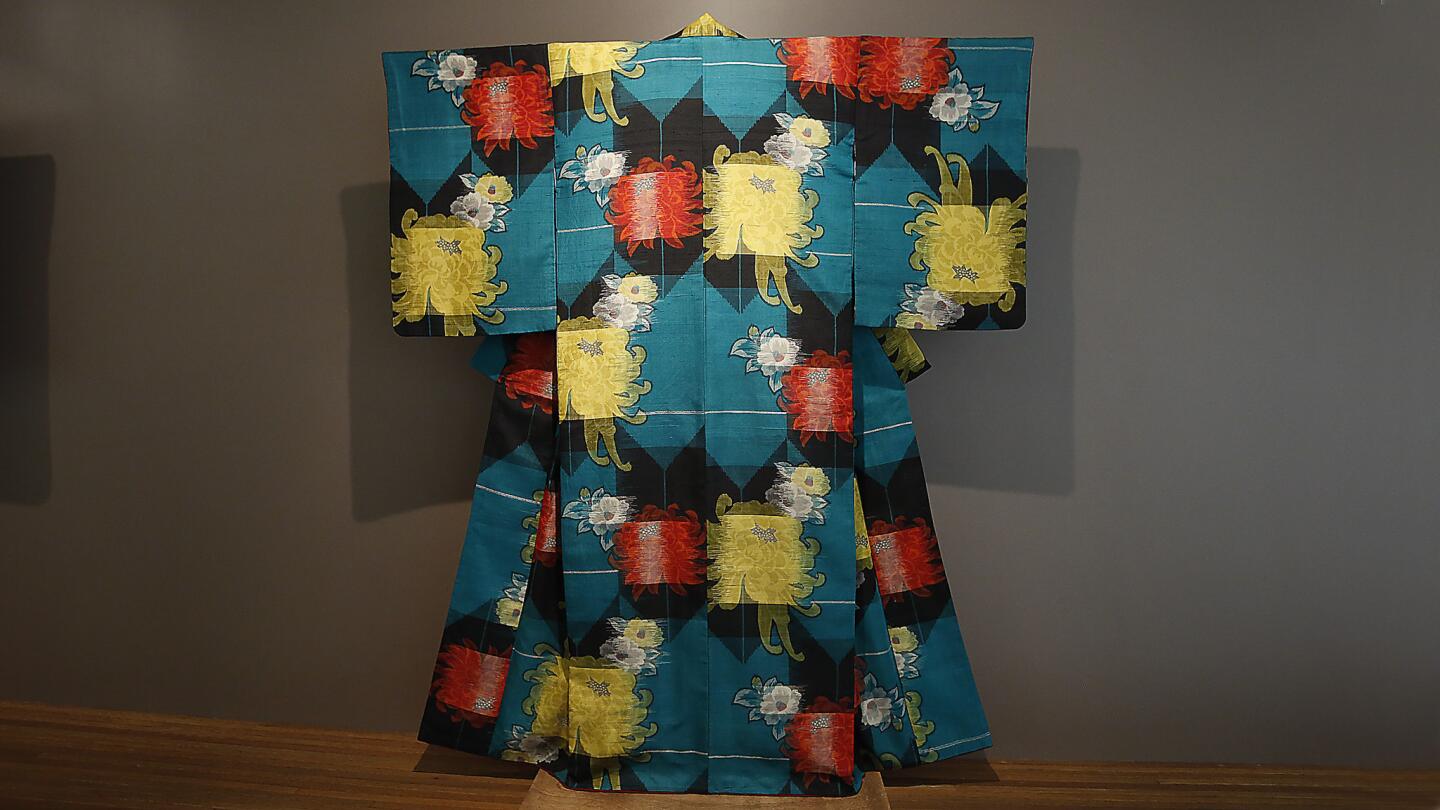
A kimono from the 1930s bursts with chrysanthemums, camellias and an arrow-feather pattern, all traditional elements in Japanese art and design. But all rendered in distinctly modern ways. (Kirk McKoy / Los Angeles Times)
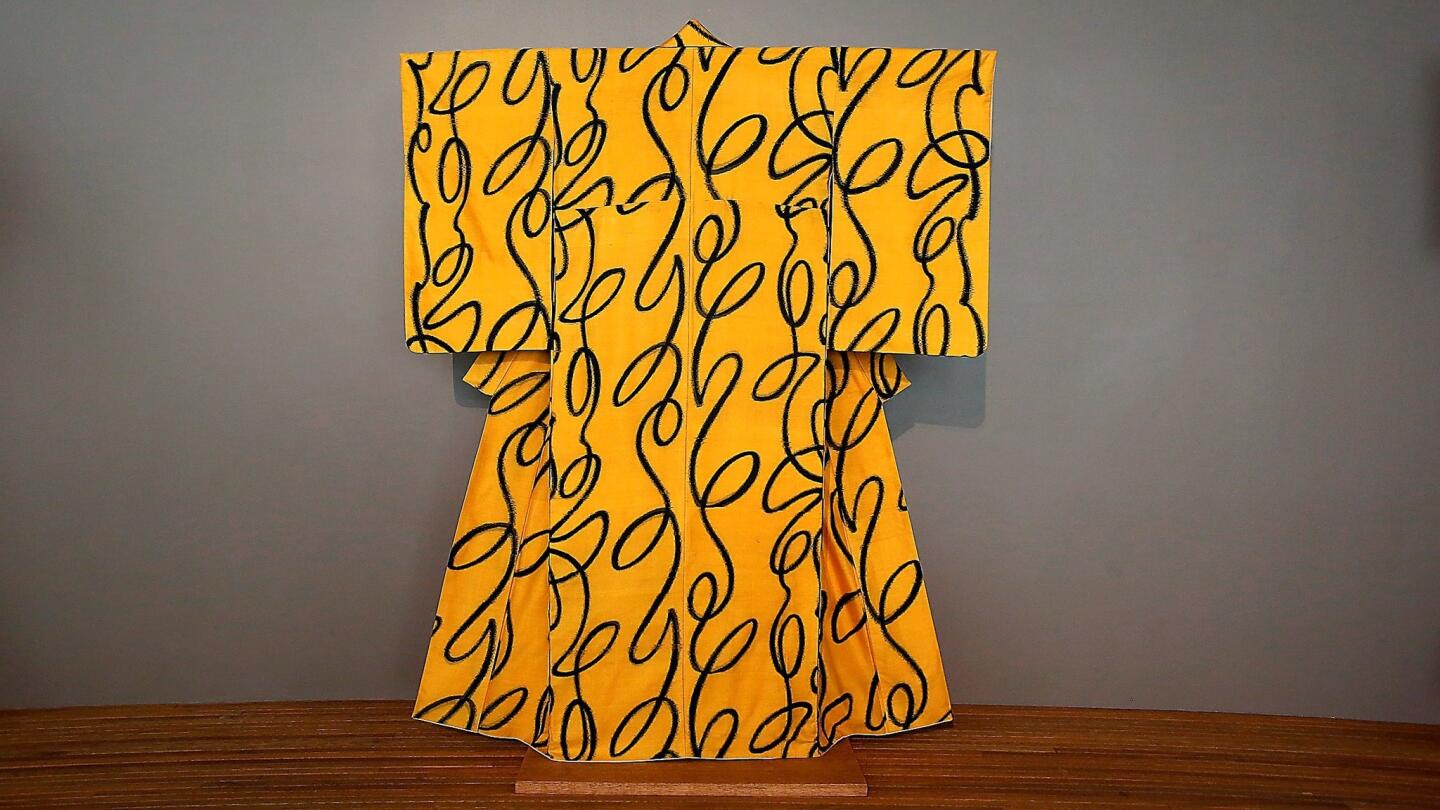
One of the most beguiling aspects of LACMA’s show is the luxury of so much color, such as this golden kimono, crafted circa 1950, which features looping, vertical lines. (Kirk McKoy / Los Angeles Times)
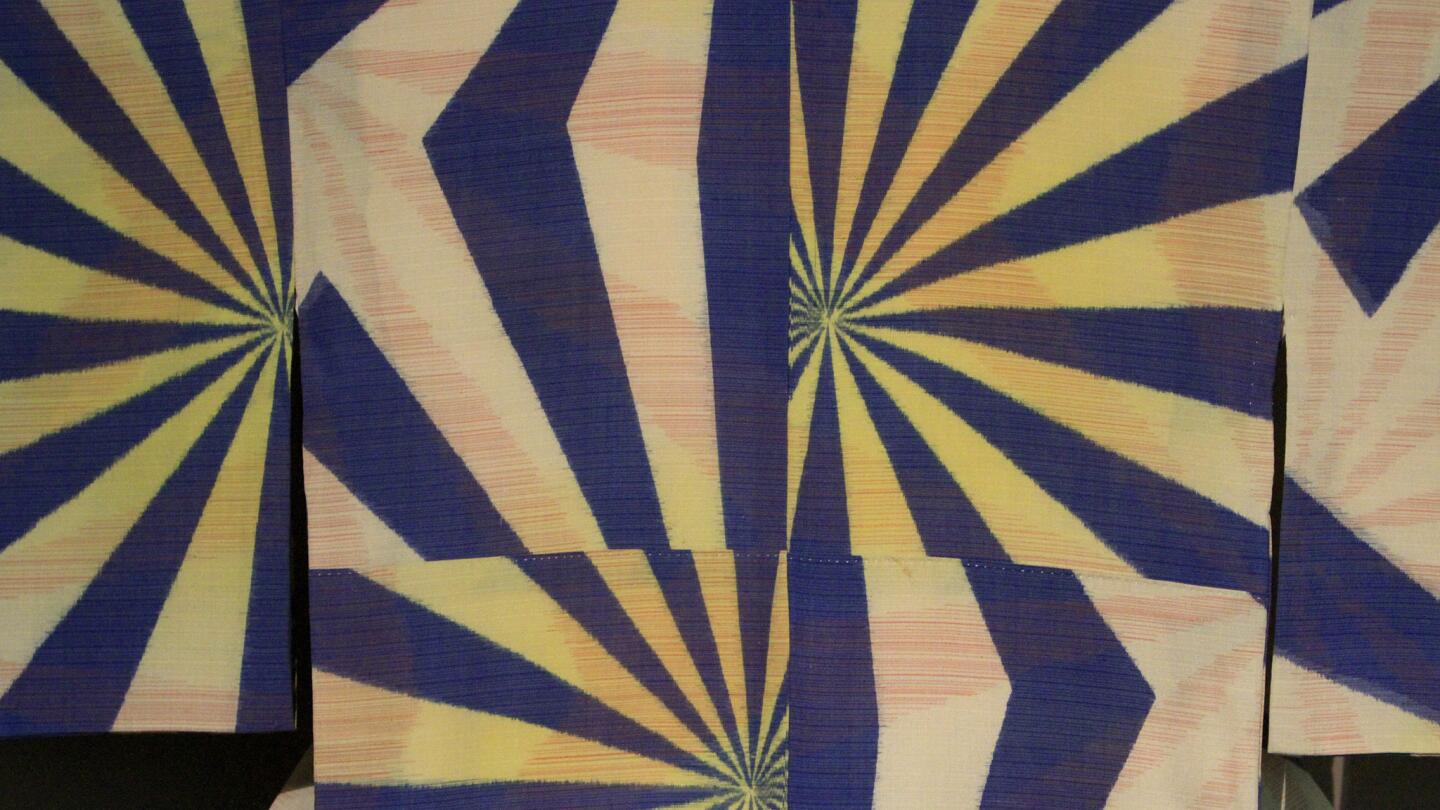
Another exquisite piece (this one from 1940) bears a pattern reminiscent of the rising sun flags that were popular during the Edo era (1615-1868). They symbolized good luck. (Kirk McKoy / Los Angeles Times)
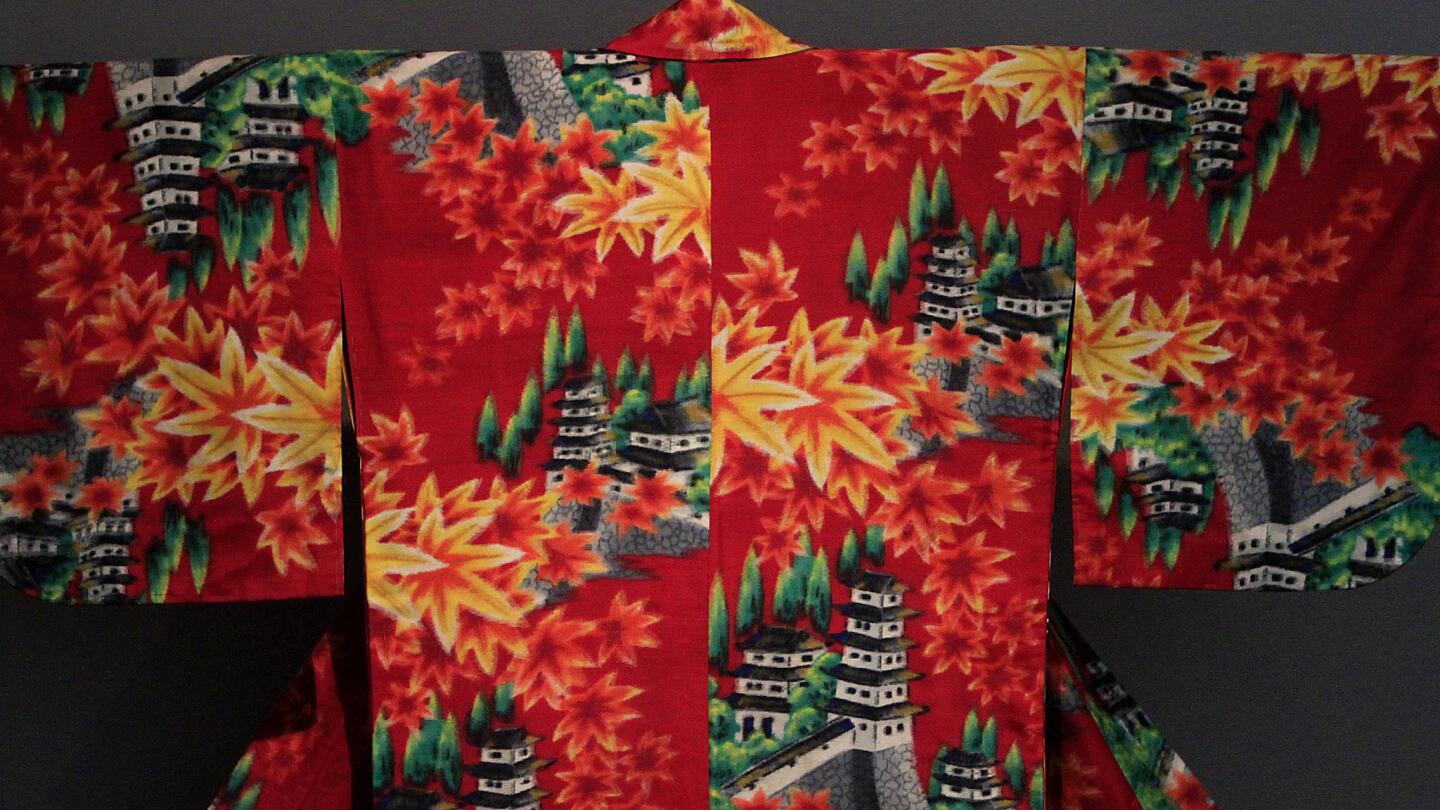
A kimono from 1950 features a design made from maple leaves and a castle. The kimono on view in the exhibition were used primarily as everyday wear. (Kirk McKoy / Los Angeles Times)
Advertisement
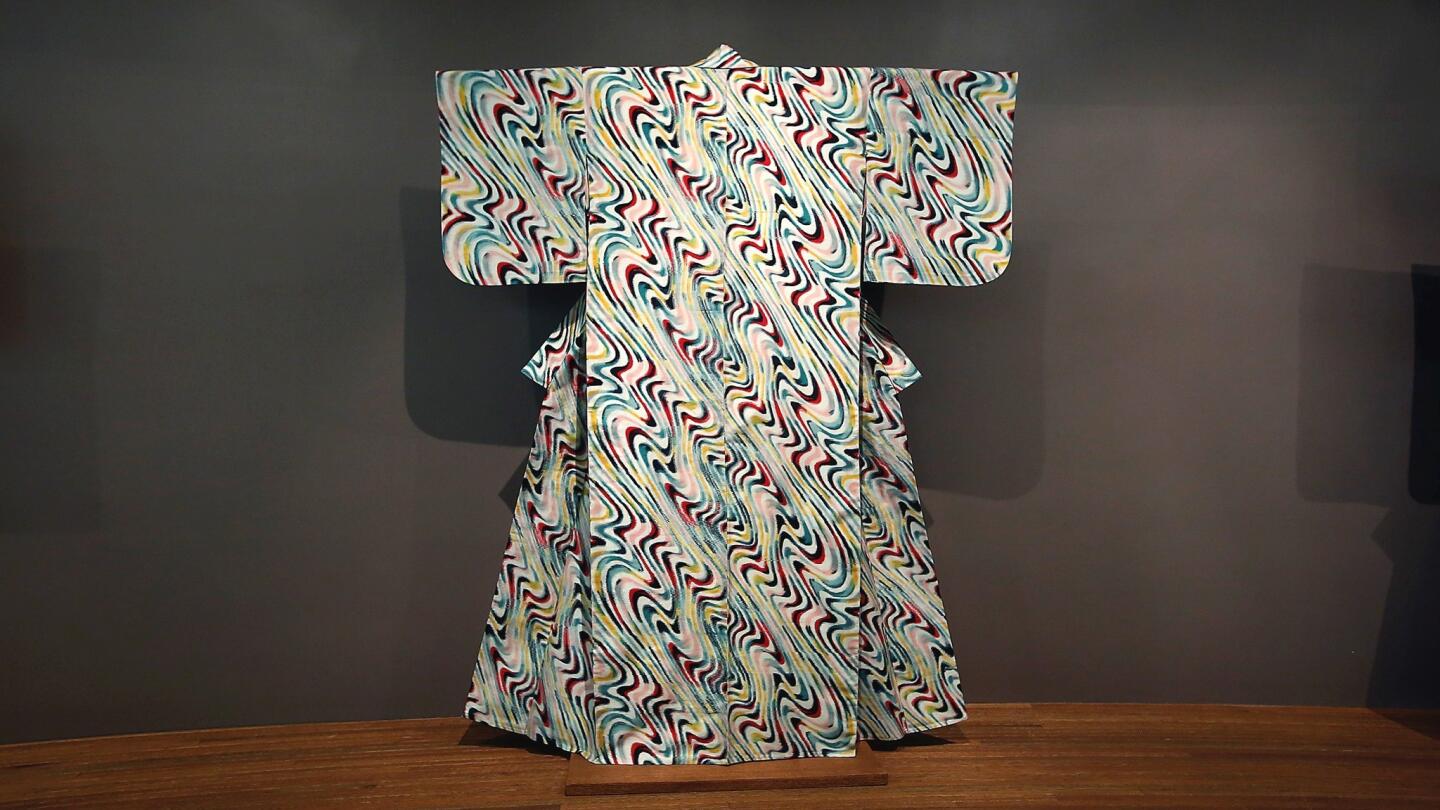
All of the modern kimono in the exhibition -- including this one displaying an abstract water pattern -- are from LACMA’s permanent collection, which curator Sharon Takeda has built up over the years. (Kirk McCoy / Los Angeles Times)
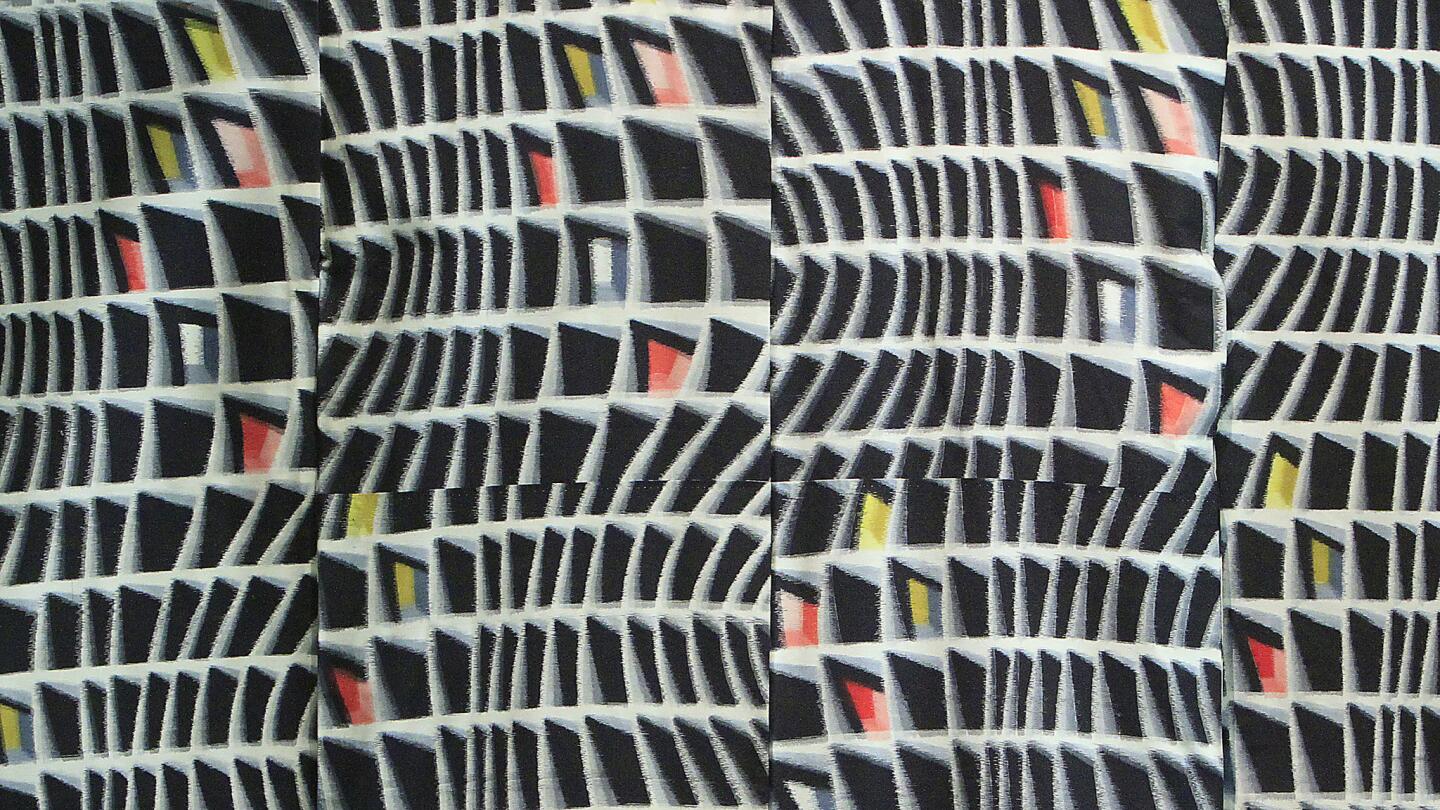
A detail view of a kimono from the 1950s reveals a pattern that plays with optical illusion: rectangular forms expand and contract, creating a sensation of movement. (Kirk McKoy / Los Angeles Times)
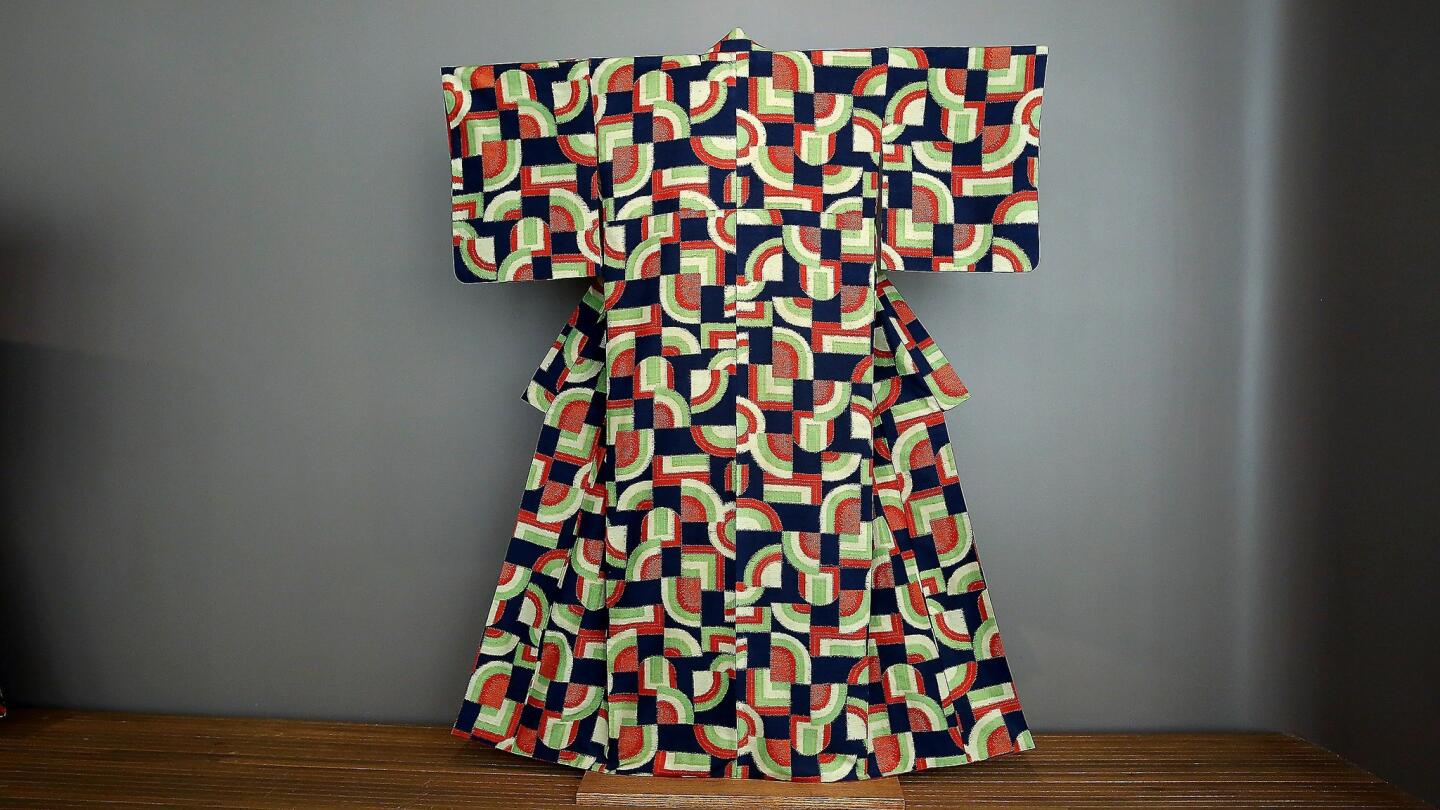
LACMA’s show captures an important moment in Japanese fashion: when kimono began to reflect Western influences including Modernism, Art Deco and Art Nouveau. Many of the patterns look as if they’d be right at home on the set of “Mad Men” (such as this one, from 1950). (Kirk McKoy / Los Angeles Times)
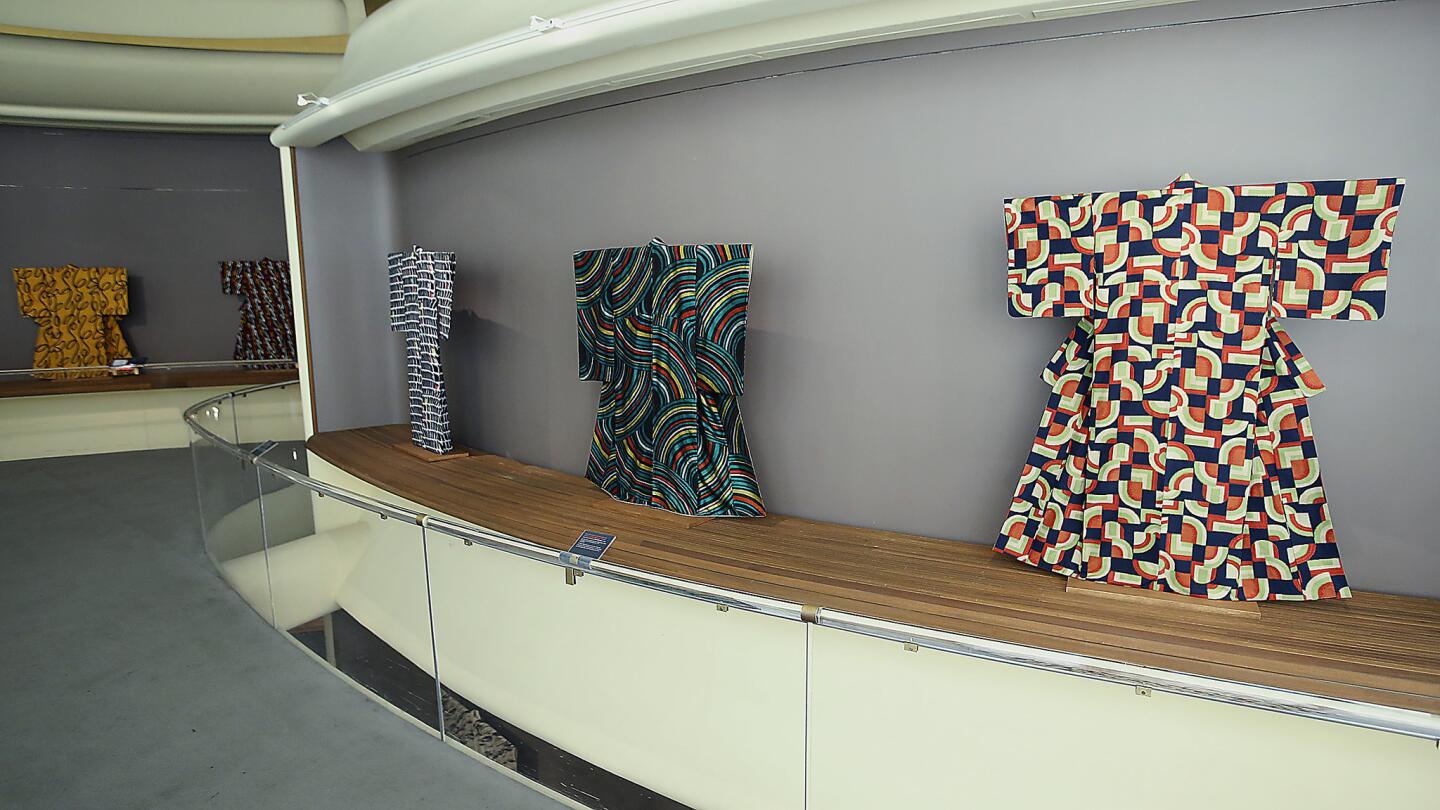
Curator Takeda says that the early 20th century was also a period when an increasing number of Japanese were beginning to don Western-style dress, including members of the Imperial family. (Kirk McKoy / Los Angeles Times)
Advertisement
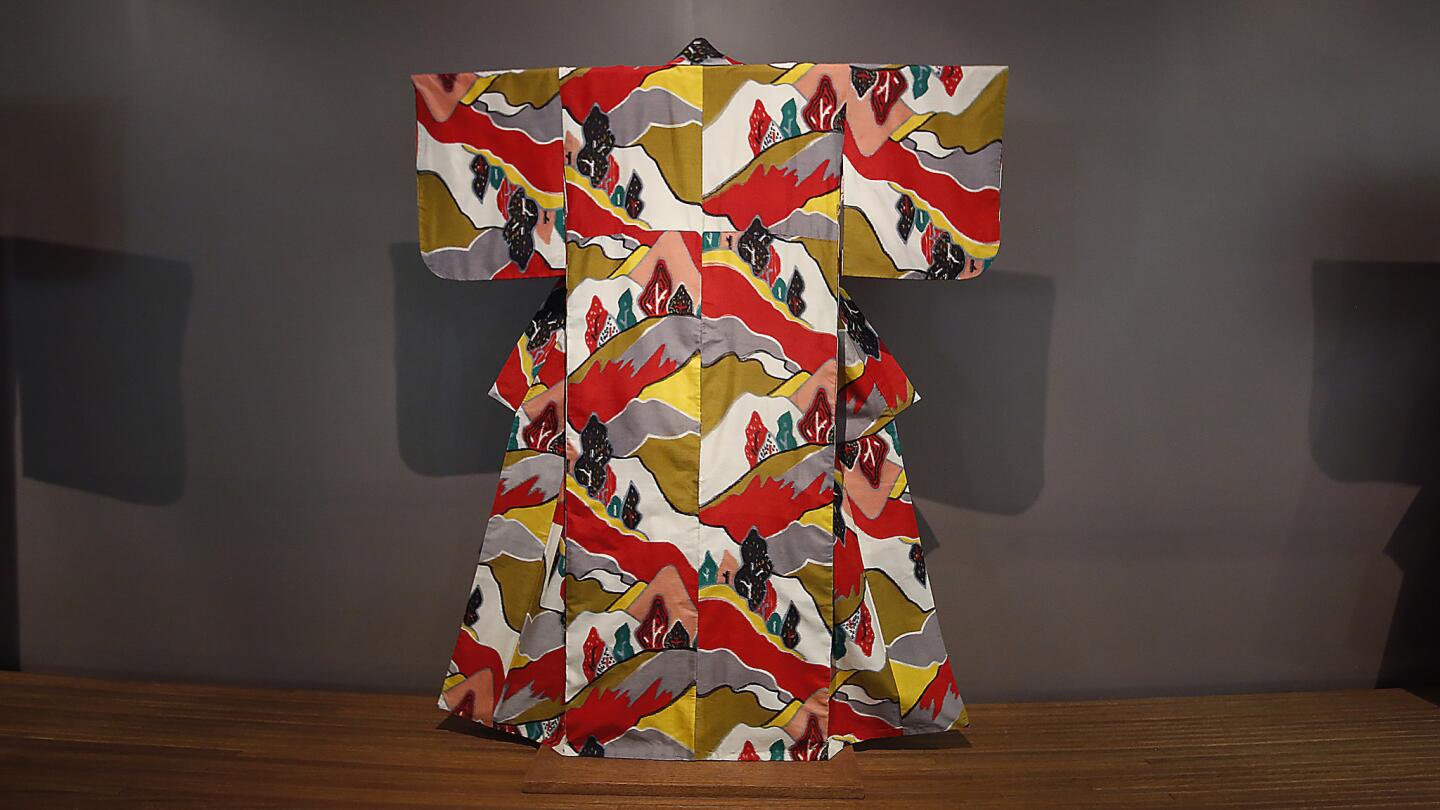
A brilliant mountain landscape appears to cascade down the back of this terrific 1950 kimono. (Kirk McKoy / Los Angeles Times)



